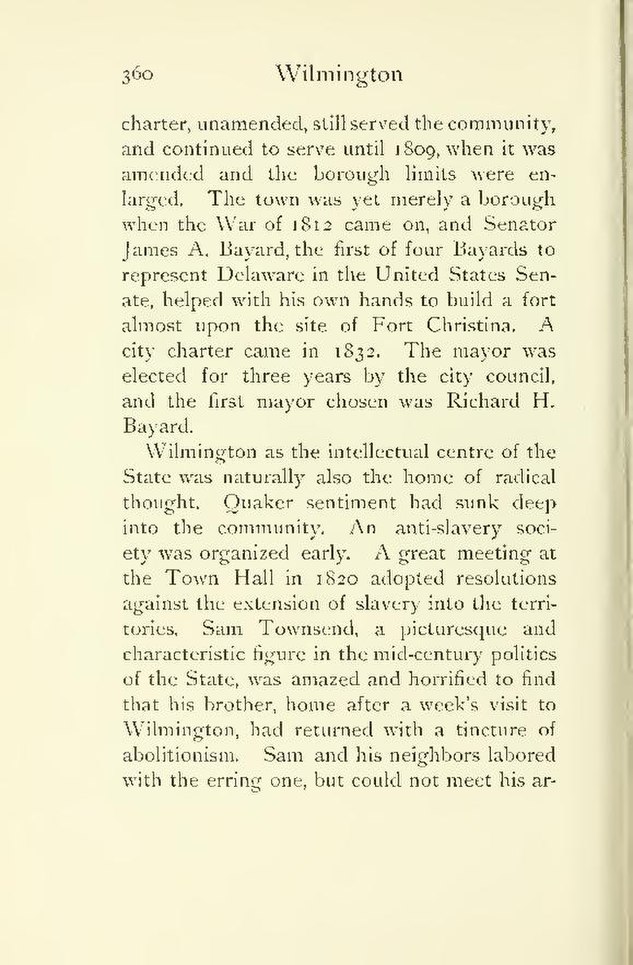charter, unamended, still served the community, and continued to serve until 1809, when it was amended and the borough limits were enlarged. The town was yet merely a borough when the War of 1812 came on, and Senator James A. Bayard, the first of four Bayards to represent Delaware in the United States Senate, helped with his own hands to build a fort almost upon the site of Fort Christina. A city charter came in 1832. The mayor was elected for three years by the city council, and the first mayor chosen was Richard H. Bayard.
Wilmington as the intellectual centre of the State was naturally also the home of radical thought. Quaker sentiment had sunk deep into the community. An anti-slavery society was organized early. A great meeting at the Town Hall in 1820 adopted resolutions against the extension of slavery into the territories. Sam Townsend, a picturesque and characteristic figure in the mid-century politics of the State, was amazed and horrified to find that his brother, home after a week's visit to Wilmington, had returned with a tincture of abolitionism. Sam and his neighbors labored with the erring one, but could not meet his ar-
